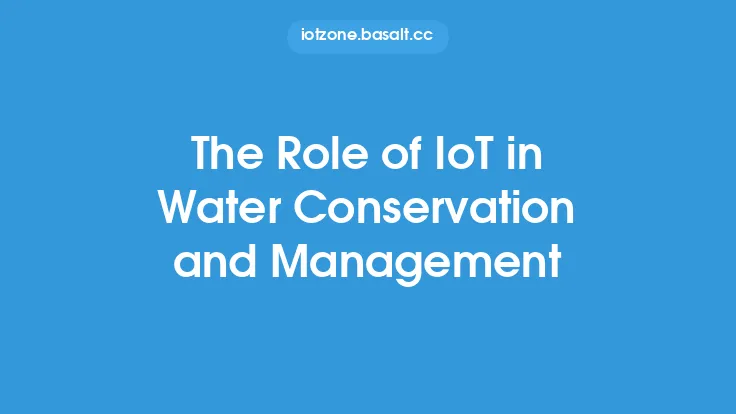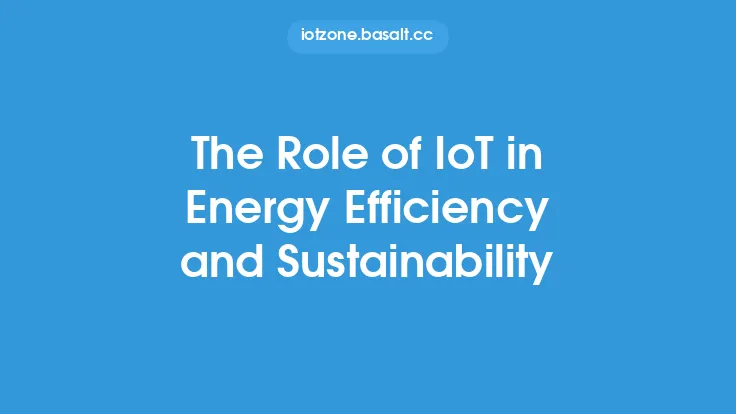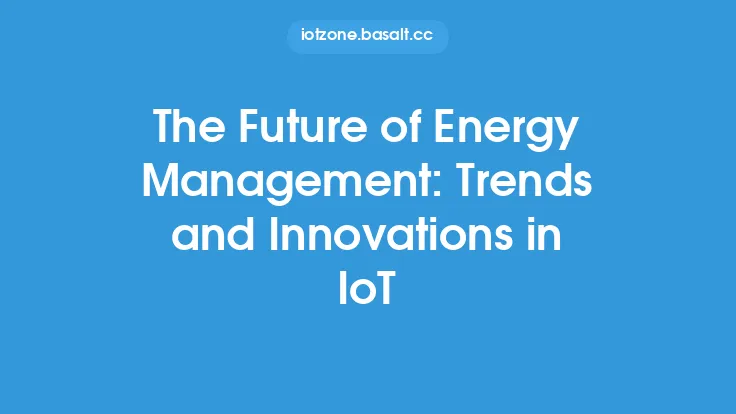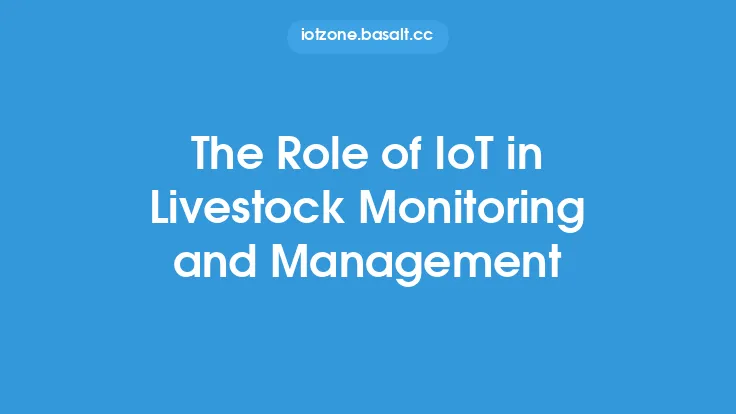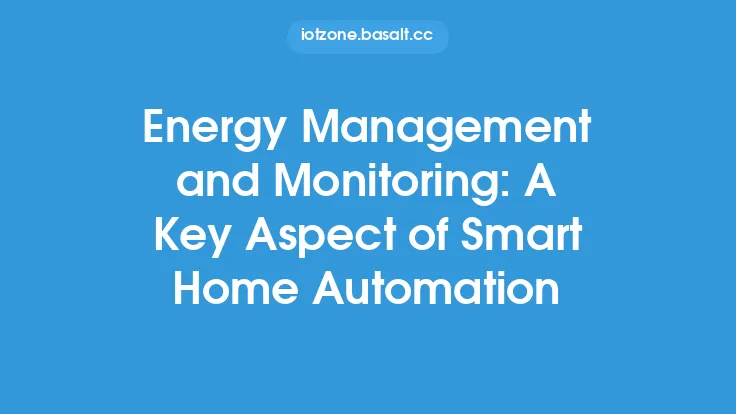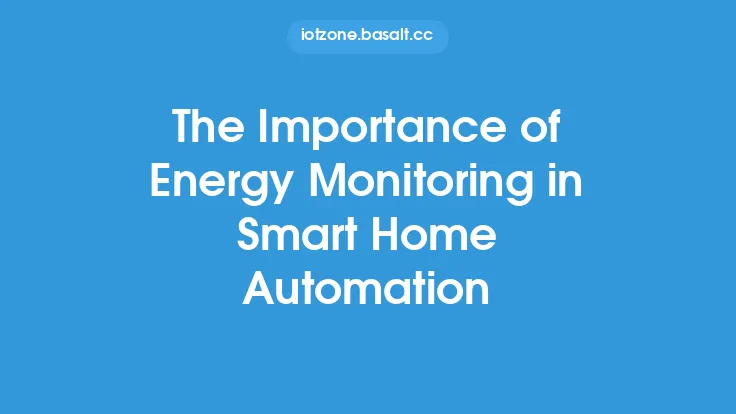The increasing demand for energy efficiency and reduced energy consumption has led to the development of innovative solutions in the field of smart home automation. One of the key technologies driving this trend is the Internet of Things (IoT), which has revolutionized the way we manage and monitor energy usage in our homes. IoT-enabled devices and systems have made it possible to collect and analyze data on energy consumption, identify areas of inefficiency, and implement strategies to optimize energy usage.
Introduction to IoT in Energy Management
IoT in energy management refers to the use of internet-connected devices and sensors to monitor and control energy usage in real-time. These devices can be integrated into various aspects of a smart home, including lighting, heating, cooling, and appliances. The data collected by these devices is transmitted to a central hub or cloud-based platform, where it can be analyzed and used to optimize energy consumption. IoT-enabled energy management systems can be controlled remotely using smartphones, tablets, or voice assistants, making it easy to monitor and adjust energy usage on the go.
Key Components of IoT-Based Energy Management Systems
IoT-based energy management systems typically consist of several key components, including:
- Sensors and Devices: These are the physical components that collect data on energy usage, such as smart plugs, smart thermostats, and energy monitors.
- Communication Protocols: These protocols enable devices to communicate with each other and with the central hub or cloud-based platform, such as Wi-Fi, Bluetooth, and Zigbee.
- Data Analytics: This refers to the software and algorithms used to analyze the data collected by the sensors and devices, providing insights into energy usage patterns and identifying areas of inefficiency.
- Control and Automation: This component enables the system to automatically adjust energy usage based on the data analysis, such as turning off lights or adjusting the thermostat.
Benefits of IoT in Energy Management
The integration of IoT in energy management offers several benefits, including:
- Energy Efficiency: IoT-enabled systems can optimize energy usage by identifying areas of inefficiency and implementing strategies to reduce waste.
- Cost Savings: By reducing energy consumption, homeowners can save money on their energy bills.
- Real-Time Monitoring: IoT-enabled systems provide real-time data on energy usage, enabling homeowners to monitor and adjust their energy consumption on the go.
- Increased Convenience: IoT-enabled systems can be controlled remotely, making it easy to adjust energy usage without having to physically interact with devices.
Technical Aspects of IoT in Energy Management
From a technical perspective, IoT in energy management involves several key concepts, including:
- Machine Learning: This refers to the use of algorithms and software to analyze data and identify patterns in energy usage.
- Cloud Computing: This enables the storage and analysis of large amounts of data, providing insights into energy usage patterns.
- Big Data Analytics: This refers to the use of software and algorithms to analyze large amounts of data, providing insights into energy usage patterns and identifying areas of inefficiency.
- Cybersecurity: This is a critical aspect of IoT in energy management, as it ensures the security and integrity of the data collected and transmitted by IoT-enabled devices.
Applications of IoT in Energy Management
IoT in energy management has several applications, including:
- Smart Grids: IoT-enabled devices can be integrated into smart grids, enabling real-time monitoring and control of energy distribution.
- Building Automation: IoT-enabled systems can be used to automate and control energy usage in commercial and industrial buildings.
- Home Automation: IoT-enabled systems can be used to automate and control energy usage in residential homes.
- Industrial Automation: IoT-enabled systems can be used to automate and control energy usage in industrial settings, such as manufacturing plants and factories.
Challenges and Limitations of IoT in Energy Management
While IoT in energy management offers several benefits, there are also several challenges and limitations, including:
- Interoperability: IoT-enabled devices from different manufacturers may not be compatible with each other, making it difficult to integrate them into a single system.
- Security: IoT-enabled devices can be vulnerable to cyber threats, compromising the security and integrity of the data collected and transmitted.
- Cost: IoT-enabled devices and systems can be expensive, making them inaccessible to some homeowners and businesses.
- Complexity: IoT-enabled systems can be complex and difficult to install and configure, requiring specialized technical expertise.
Future of IoT in Energy Management
The future of IoT in energy management is promising, with several trends and innovations on the horizon, including:
- Artificial Intelligence: The integration of artificial intelligence (AI) into IoT-enabled energy management systems, enabling more advanced data analysis and automation.
- 5G Networks: The deployment of 5G networks, enabling faster and more reliable communication between IoT-enabled devices.
- Edge Computing: The use of edge computing, enabling data analysis and processing to occur at the edge of the network, reducing latency and improving real-time monitoring and control.
- Blockchain: The use of blockchain technology, enabling secure and transparent data sharing and transactions between IoT-enabled devices.
